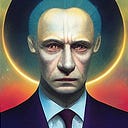

Discover more from DARK FUTURA
Every day on the streets, as we brush past each other, we drift through two conterminous worlds; one waking, the other just below the surface—the world of the unwaking. This is the pale of the felt but unseen, which functions as the gargantuan body of the iceberg whose tip is merely the conscious, phenomenal world—the world of the lie.
This upper world which we think we inhabit acts merely as fodder for the vastly intricate network of oneiric chaos that stews beneath its waves. The things we think we are, are but figments of this interior, which in some ways does not belong to us.
But if not us, then whom?
The things which stir beneath the caul of consciousness are like ever-dormant volcanoes, the unpredictable artesian shudders leading to the active well-springs of our ‘conscious’ mind: pinpoints bursting to the surface in the form of unexpected qualia, the residue of evolutionary necessity. We receive these signals like sudden stabs of light from the abyss, never certain of their origins and vectors, never aware of the subterranean driving processes.
Desires carry us along on a leash through their impetuous quests, all the while obscuring the path. Our minds drift through overlapping fields of tension and release, yearning and low-simmering, sourceless qualms which tighten our jaws without forethought.
Through this illusory haze we veer through life, as slaves to turbulent urges, thoughts which sometimes seem as archetypal as cave drawings, no less mysterious or distantly-sourced in that long-forgotten capsule of our genetic memory. The brain stem was our original vestigial organ of control. The mass of the neocortex covering this pith like a barnacle has added a barrier of filtration to the script of our waking dream.
In Terrence Mckenna’s Stoned Ape Theory, monkeys began ingesting heaps of psilocybin mushrooms a hundred thousand years ago, leading to a rapid cognitive revolution. The primates began to hallucinate in such a way as to stimulate neuronal interconnectivity, leading to higher order thought and processing of the symbols essential for the development of language, music, and ultimately recursion, self-awareness, and consciousness.
There’s evidence that cave paintings were a form of prehistoric cinema, a type of shared dream. Cavemen imbibing of hallucinogens staring at the paintings by firelight, watched the subjects come to life in the dancing shadows. It could explain the earliest motifs for their etchings, chimerical depictions of humanoid shapes with antlers, horns, animal heads; altered states of consciousness fueling the earliest yearnings which can be called religious experiences.
But what were they chasing, what telos marked those untethered early flights? The brain developed in three key stages: the hindbrain, which controls basic life functions like breathing and heart rate; the limbic system, which controls emotions and fight or flight reflexes; and the neocortex, which controls higher order thoughts and mental reasoning. The former systems are upstream of the latter, they receive sensory inputs from the sense organs directly, allowing them to upstage the newer neocortex, like in the infamous amygdala hijack response.
These older relicts of our brain filter reality through the immediacy of intuition and instinct. Beneath that crystal surface of thought-distillation lies a broiling sea of ancient mechanisms, processing sensory inputs upstream of any reflection or mental recursion. In some ways, one can more accurately think of the brain as a competing set of independent organs, each with their own distinct operative desires. The goals of the cortex may be, for instance as some have suggested, to always confirm and validate its own existence.
Think of a thought, that very first primal burst of light, which may evolve into an idea chain. Can we trace its provenance? We’re told thoughts begin as waves of firing neurons, a swell of electric activity effervescing from a single starting organ, building momentum as recursion from other organs of the brain add their own re-interpreted input to the building impulse. But what was the very first tipping point, the initial domino which set it all in motion? Did that thought enter existence at the organ stage, for instance the entirety of the amygdala somehow deciding to fire off? Or can we trace it to a constellation of neurons wedged in some damply remote crevice of the amygdala?
If that were the case, the neurons surely couldn’t all fire off at the same time in perfect synchrony; there is always a more isolated spark to ignite the causal chain. After all, seeing a crowd of rowdy revelers from above, one could perhaps prematurely judge the ensuing fight to have been started by a particularly belligerent huddle of men within the larger gathering. But were one able to zoom in and replay the scene, they may find one particular person responsible for triggering the confrontation with a shove or an angry word.
Taken with the same granularity, we can assume that in that more isolated group of neurons, logic would dictate one of them initially setting off the chain. But the implications of that would be startling: it would seem to imply that what we consider to be our very selves, the ousia of our being, is in fact the culmination of a single neuron.
When we think of ‘who we are’, we typically imagine our human bodies. But scientifically we know that not to be the case. If we were to amputate our arms and legs, we would still remain ourselves within our mind, which resides in the ‘brain’. The thing we consider our base fundamental quotient of existence is in fact our brains, not our bodies. Even if we were to cut off our bodies entirely from the neck down, we would still be a conscious being, like a quadriplegic person.
But who we are is predicated on our thoughts, our ability to reflect on ourselves. As per the above thought experiment, if it’s our neurons that are the starting null point of our sentience, and if a single neuron must logically kindle the first flames of the blaze of cognition, then is everything that “we” are embodied in that one first neuron? Taken to its granular extreme, one can dissect apart the neuron itself and hypothesize whether some atomic then subatomic force is the actual base initiator of the action which eventually leads to the neuron cascade. Is the essence of our consciousness to be distilled down to some tiny organelle inside the neuron’s nucleus—or even further, a single atom, ad infinitum?
The notion is absurd on the surface. The very essence of who we are cannot possibly be encompassed in but a single neuron. It’s more sensible that different kinds of thoughts originate in different areas of the brain. At risk of veering into epiphenomenalism, one can say our existence appears to be a sort of standing wave of brain activity, a wash of spike trains sweeping back and forth, chorusing the notes of our awareness, which itself blooms in the interstices of their overlapping harmonies.
The problem this creates—for some, at least—is the classical one of irreconcilable determinism. That is, the total sublation of ‘free will’ in favor of a deterministic model where our thoughts and actions are merely the causative effects of an unending chain of push-and-pull of brain activity; an infinitely complex primordial soup of overlapping frequencies with us as deluded spectators in the same way a small child given a false controller believes himself to be playing the video game on the screen.
There’s some evidence of this. Experiments by Itzhak Fried, for instance, have documented a phenomenon where the action potential of the brain appears to initiate before our conscious mind creates the perceived “will” to act. The experiment was done by measuring people’s brain activity while in the process of consciously and willfully deciding on an action, like moving an arm. Using an interrogative process, they pinned down the exact time interval that the participants believed themselves to have first made the conscious thought representing their inner ‘will power’. But the brain scans showed that in each case, the electrical impulse of the brain would begin ramping up upwards of 7 whole seconds before the conscious decision to act. This flips classical causality by implying that we merely believe ourselves to be the driving force of our actions, and that we have some innate ‘will power’ or entelechy, when in reality our inner systems function of their own volition based on the infinitely complex internal feedback mechanisms and pressure mediations of neural activity. In reality, it is only after receiving the ‘push’ ignition do we believe ourselves to have formed the maiden conscious ‘desire’ to perform the action.
“The first thought we had was ‘we have to check if this is real’,” says Haynes. “We came up with more sanity checks than I’ve ever seen in any other study before.” The conscious decision to push the button was made about a second before the actual act, but the team discovered that a pattern of brain activity seemed to predict that decision by as many as seven seconds. Long before the subjects were even aware of making a choice, it seems, their brains had already decided.
There’s an old book about a man possessed by a cacophony of demons, each with their own names, desires, and personalities bubbling up through the wells of his subconscious. Eventually, to keep his sanity he mentally combines them into one name and personality for a more natural and fluid interaction.
So, is there really one monolithic ‘us’ inside our minds, one homogenous awareness? Or are we merely the necessary condensation of various disparate organs, each with their own purpose and design, into one voice channel for the sake of evolutionary coherence and efficiency? Are “we” just the central node of an interference pattern, the saturation point of a density matrix of noise from an incomprehensible array of sources?
A group of scientists from the Blue Brain project used algebraic topology to discover that during thought processes, the brain creates highly complex 7-dimensional simplex structures, with even 11-dimensional simplices being recorded.
Their takeaway was that during intense thought-making, vast castles of coherent neuron geometries are conjured from the seemingly disordered soup, before just as quickly collapsing into decoherence as the thought ends.
“It is as if the brain reacts to a stimulus by building then razing a tower of multi-dimensional blocks, starting with rods (1D), then planks (2D), then cubes (3D), and then more complex geometries with 4D, 5D, and so on.”
The researchers believe this suggests a previously unforeseen degree of organization of neurons into ‘cliques’ that participate in creating these structures, which appear to be the physical instantiations of our thoughts. Just imagine, that loving memory of your first crush, brimming with the timeless limerence of childhood, is but an intricate gothic spire of impulses rising and falling in eleven dimensions in the murky cortical soup of your brain. One is reminded of cymatic resonance:
In conclusion, this study suggests that neocortical microcircuits process information through a stereotypical progression of clique and cavity formation and disintegration, consistent with a recent hypothesis of common strategies for information processing across the neocortex (Harris and Shepherd, 2015). We conjecture that a stimulus may be processed by binding neurons into cliques of increasingly higher dimension, as a specific class of cell assemblies, possibly to represent features of the stimulus (Hebb, 1949; Braitenberg, 1978), and by binding these cliques into cavities of increasing complexity, possibly to represent the associations between the features.
What they’re saying is that the brain may be processing known stimuli by triggering the associated cliques of neurons, which are then ‘modulated’ toward the particular features of that stimuli by expanding into increasingly complex multi-dimensional morphologies. So, for instance: you smell a certain scent, and that begins the activation of the anchoring neuron clique into a simpler pre-laid structure representing the basic memory-identification of that scent. Then as that scent triggers associations—like childhood memories, or the perfume of a loved one—the neuron cliques ramify into ever-more intricate cathedrals by conjoining with other neighboring cliques into 5th, and 6th, and 7th dimensional structures.
But what do these voices beneath our subconscious really want? To what end are we directed by their deep rumbles?
It can be said that the earliest forms of protoplasmic life began as a coalescence of cells purposed with obtaining energy to last long enough to divide and spread its genetic legacy. That is to say, the a posteriori purpose of life from a biological standpoint is to multiply and diversify, the latter being important for the stochasticity necessary for evolution and adaptation to new or changing environments.
There are other rabbit holes to pursue—for instance the theories of scientists like Jeremy England and Ilya Prigogine, which suggest that the true biological purpose of life is to dissipate energy concentrations—by dividing and spreading—as a mechanism for bringing the universe toward thermodynamic equilibrium.
But ignoring teleological arguments for the moment, we can say that the mechanical purpose of life is to divide and reproduce, for whatever reason that may be. Using this premise, we can infer that—as mentioned earlier—the sole purpose for an organism seeking sustenance is to have a source of energy to power the cellular division of reproduction, for the sake of proliferating its genetic legacy.
In humans, this amounts to procreation. A small cell does not require ‘consciousness’ to achieve its comparatively basic genetic reproduction. But mammals have evolved to the point of requiring basic forms of consciousness and cerebral-cortical deduction to survive and navigate their complex environments long enough to achieve this.
Ultimately, this means that for humans, consciousness is merely the means to an end, not the end itself. If reproduction could be done without consciousness, then it would be. Biologically speaking, life doesn’t require consciousness to pass down its genetic code. In humans, consciousness is required merely to fulfill the complex tasks and environmental problem solving in order to survive to the point of procreation and reproduction.
But we begin life in an unconscious state, gestating for nine months in the comfort of our amniotic isolation chambers. Our altricial birth is a result of this term being the maximum amount of time a human mother can sustain the peak metabolic rate the baby requires, without compromising her own life functions.
As we’re awakened from that pre-birth dream, we’re thrust coldly into a world of symbol, archetype, and hierarchy. Our consciousness develops quickly in order to grasp how best to navigate these pitfalls so that we can mature to the point of reproduction. But every night of this journey ends the same way: we retreat back into that other, original world of the endless dream.
Many animals like bats sleep over twenty hours a day, rising only to quickly feed. Some of us likely even know humans who adhere to such a schedule; some might even be those humans. In this way, it can be argued that our unconscious dreamstate is our most natural, primitive state: our fundamental existence.
It may seem a pedantic point, until viewed from a neurological-evolutionary and teleological standpoint; chicken or egg. We commonly consider our dreamstate to be anything from a tolerated necessity, a symbol-ridden curiosity, to an outright nuisance, to be suffered through until the more ontologically defined waking hours can fulfill us with their desire-driven ambitions. In essence, the dreamstate becomes a piece of baggage; an atavistic relict too opaque to be anything more than poorly understood and as a consequence assumed to be of little relevance. The waking hours are where we exist, we defiantly proclaim; they are the true ‘us’. Hypostasis—the pith and essence of our being, wrought from the flexible fibers of our free will.
But if the numinous world of the unconscious is actually our natural state of being, and the waking a residual byproduct, merely a means to an end, it would follow that life’s daily toils are but the footsteps of a return journey home, a purgatorial interlude to the true, most natural state.
The Aboriginal Australians, said to be the oldest continuous culture in the world, have embodied this in their concept of The Dreaming. It’s an ancestral dream-state as well as a series of beliefs revolving around the idea that the world of the dream is the true, original existence, from which we come and to which we return. The concept is greatly misunderstood and likely cannot fully be grasped by Western minds, as it utilizes words and notions with no parallels. It is in fact all-encompassing as to be a way of life, rather than merely a belief.
“The Pintupi (Aboriginal group) believe nothing was or is created by humans; it was all there from the beginning arising from the Dreaming. The conception and birth of an individual also arise from dreaming.
Before conception, a person is said to be sitting as an Aboriginal Dreamtime being. This process is thought of as a transformation from the Dreaming into the actual. Dreaming links everything together. Thus, a person is linked to a place.
Dreaming provides an identity for the person, an identity that has existed before the person’s birth and will exist after. Thus Pintupi comes from the Pintupi land, which is they’re Dreaming.” ― Fred Alan Wolf, The Dreaming Universe: A Mind-Expanding Journey into the Realm Where Psyche and Physics Meet
The Wiki above explains that the Aboriginal tribes’ word for dream is derived from one meaning ‘to see god’. However, there’s controversy amongst linguists who’ve come to other conclusions, like the following:
In English, anthropologists have variously translated words normally understood to mean Dreaming or Dreamtime in a variety of other ways, including "Everywhen", "world-dawn", "ancestral past", "ancestral present", "ancestral now" (satirically), "unfixed in time", "abiding events" or "abiding law".
It goes on to say that some tribes even equate the world-creation with The Dreaming:
Dreaming existed before the life of the individual begins, and continues to exist when the life of the individual ends. Both before and after life, it is believed that this spirit-child exists in the Dreaming and is only initiated into life by being born through a mother. The spirit of the child is culturally understood to enter the developing fetus during the fifth month of pregnancy. When the mother felt the child move in the womb for the first time, it was thought that this was the work of the spirit of the land in which the mother then stood. Upon birth, the child is considered to be a special custodian of that part of their country and is taught the stories and songlines of that place. As Wolf (1994: p. 14) states: "A 'black fella' may regard his totem or the place from which his spirit came as his Dreaming. He may also regard tribal law as his Dreaming."
Why does that strike us as so intuitive, and seems closer to the source of life’s currents than the needlessly opaque religious conceits of the modern world, with their byzantine scriptures and artificial rituals? Whether you ascribe to Occam’s razor or simple logic, it feels infinitely more natural to regard life as an intermittent dream within a dream, than be subservient to a ritual appeasement of some confounding skyfather and his endlessly protean demands. It’s particularly notable that the Aboriginal tribes regard their ancestors within the dreamtime with reverence, but do not worship or deify them, in the traditional sense.
Why have we always tended toward subservient worship rather than healthful, thanks-giving reverence? The answer lies in the fact that primitive power structures have invariably used the tool of false idols to control us, concocting ‘vengeful gods’ who require precisely-coded worship, lest they turn on their children like bibulous fathers.
If there’s any truth to the deterministic model, and that our minds are self-seeking engines of roiling impulses removed from the carefully constructed illusion of ‘free will’, then in some ways, the dream metaphor becomes even more apt. Because ultimately, so long as we feel our actions are our own, it doesn’t make much difference whether they really are, since, after all, who we are is the totality of action, the entelechy—the rest is epistemic window dressing. And by simultaneously being both ours and not ours, our actions could perhaps be thought of as comprising a greater vastness, a connectivity like to that of a dream, and to other embodiments, whatever we might call them.
Those familiar with the work of physicists like Henry Stapp and Penrose/Hameroff of Orch OR fame, will know such flights are not merely the province of dodgy new-age mystics, but has some hard science behind it. Several subsets of such theories point to consciousness arising at the quantum level in the brain, with the attendant nonlocal properties and uncanny ramifications. These include the possibility that the mind exists in a superposition of infinite simultaneous instances, representing an infinite choice list, up until the moment of our conscious choosing ‘collapses the wave function’. There are many variants, like Everett’s Many Worlds Interpretation, which point to such simultaneity of all possible outcomes coexisting at once.
Perhaps, long before modern science haughtily circumscribed these ideas under its cliquish purview, the ancient peoples had already intuited the ontic essences of our world, using allegorical concepts like The Dreaming and other old traditions. Through generations of passed down mysteries and individual self-reflection many cultures have likely grasped some of the metaphysical rudiments of our shared existence better than ‘Science’ ever will, particularly a Science increasingly concerned with fortifying its own dominance rather than pursuing truth.
As we enter a new age of institutional collapse and rightful distrust of the authorities tasked with our safekeeping, it’s time for us to turn inward, and find our own hesychastic refuge in the world of the internal, where all secrets lie in wait.
If you enjoyed the read, I would greatly appreciate if you subscribed to a monthly/yearly pledge to support my work, so that I may continue providing you with detailed, incisive reports like this one.
Alternatively, you can tip here: Tip Jar





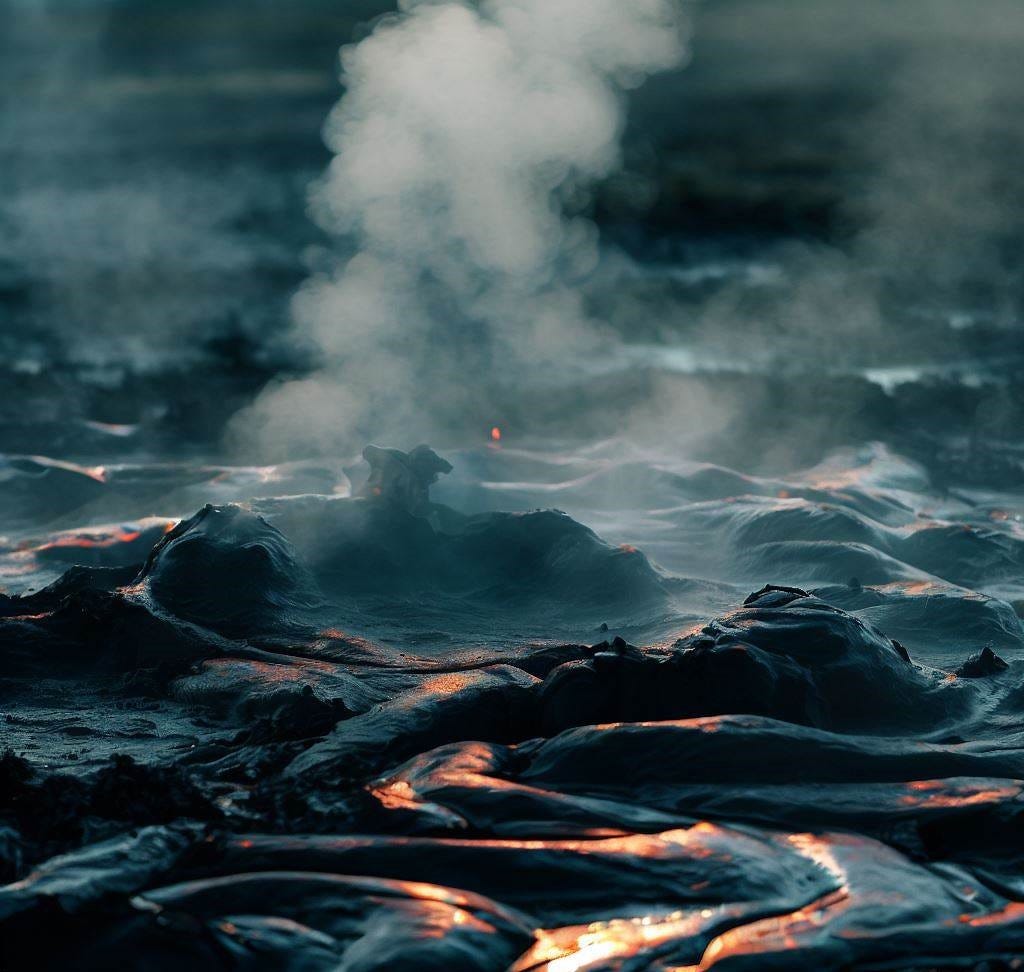
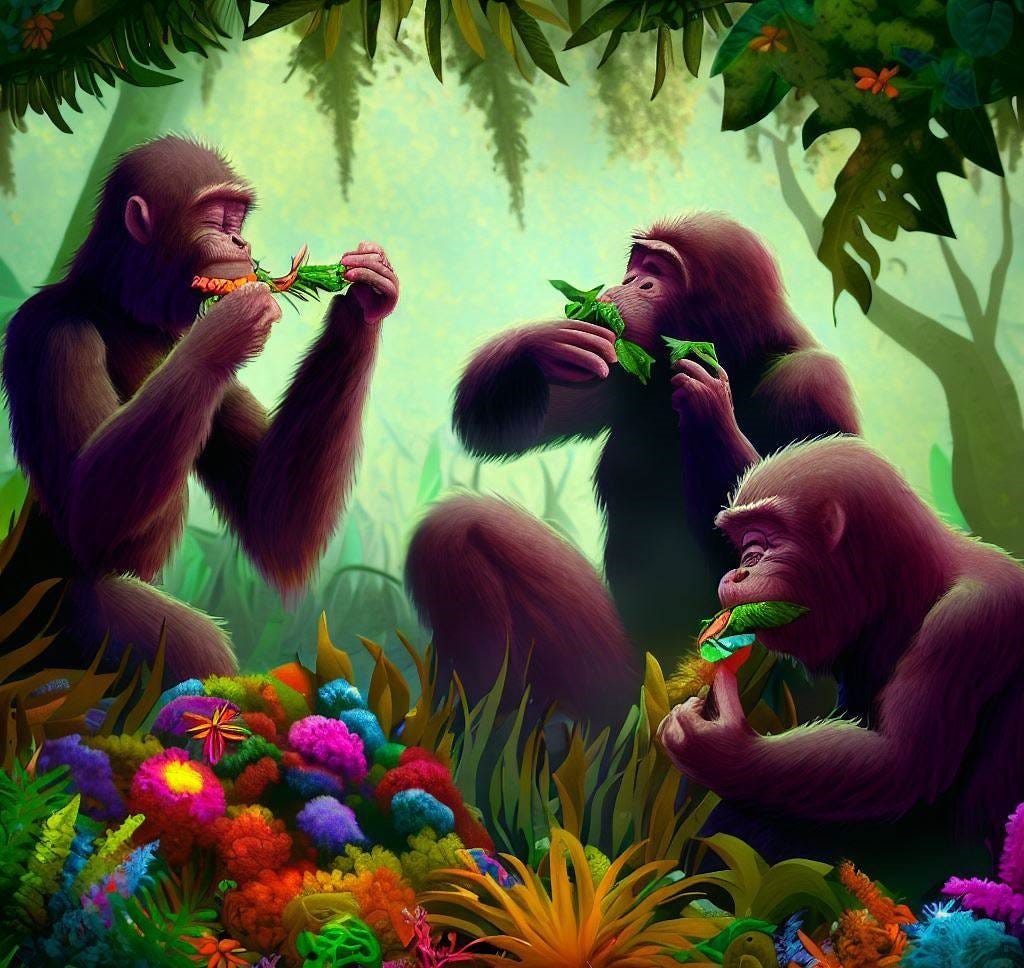

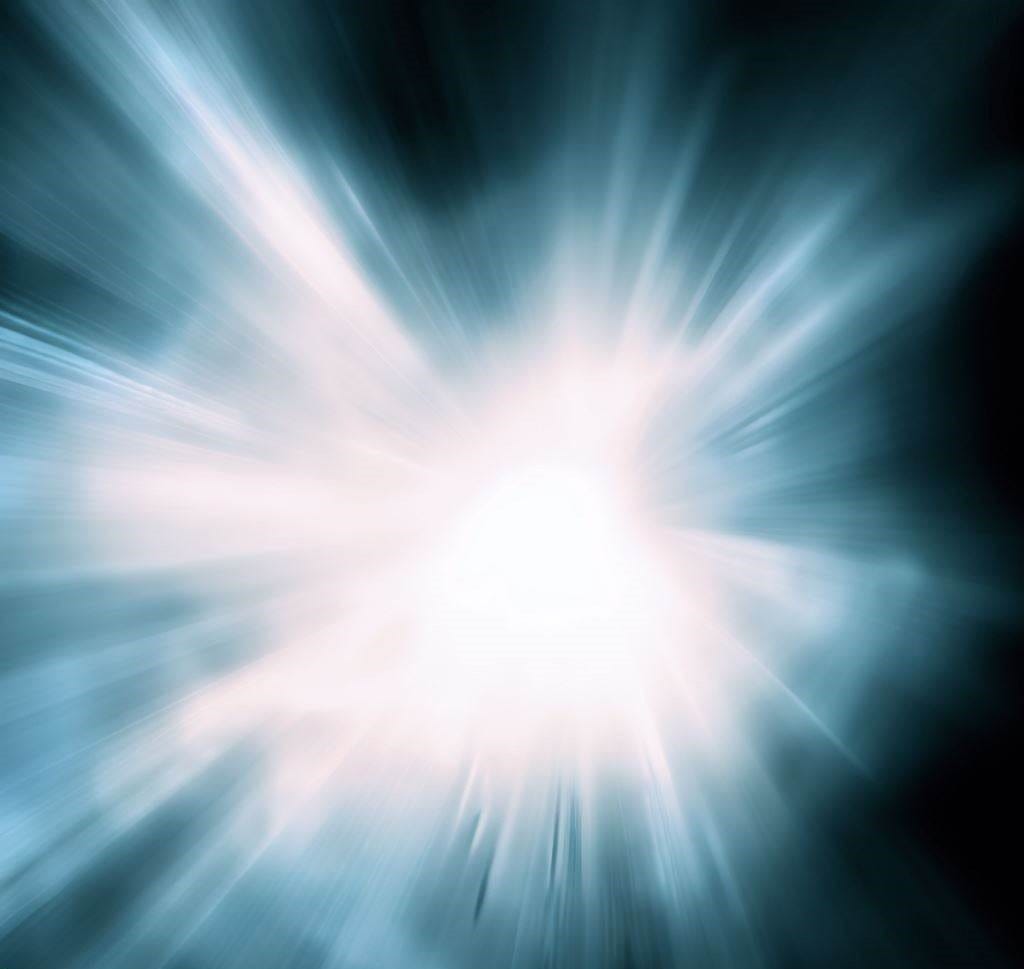
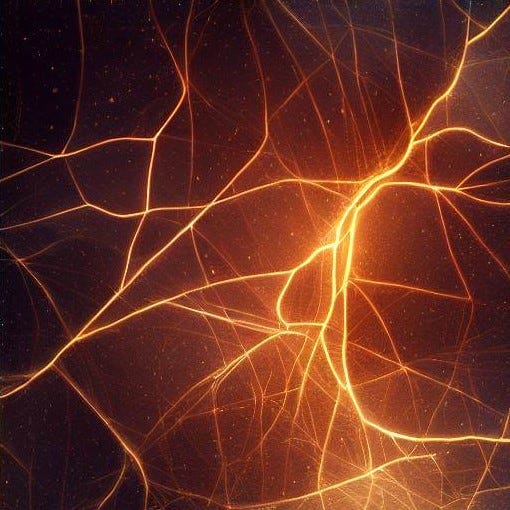
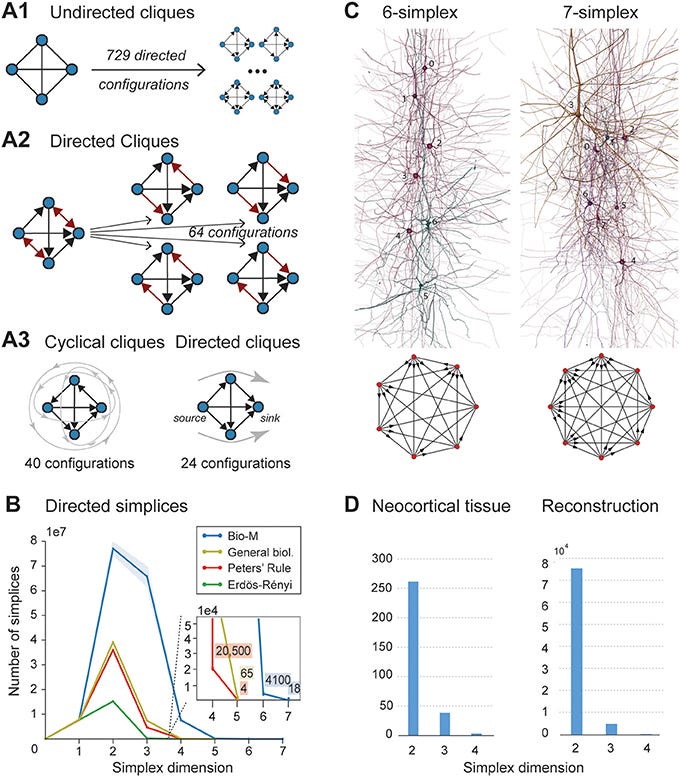
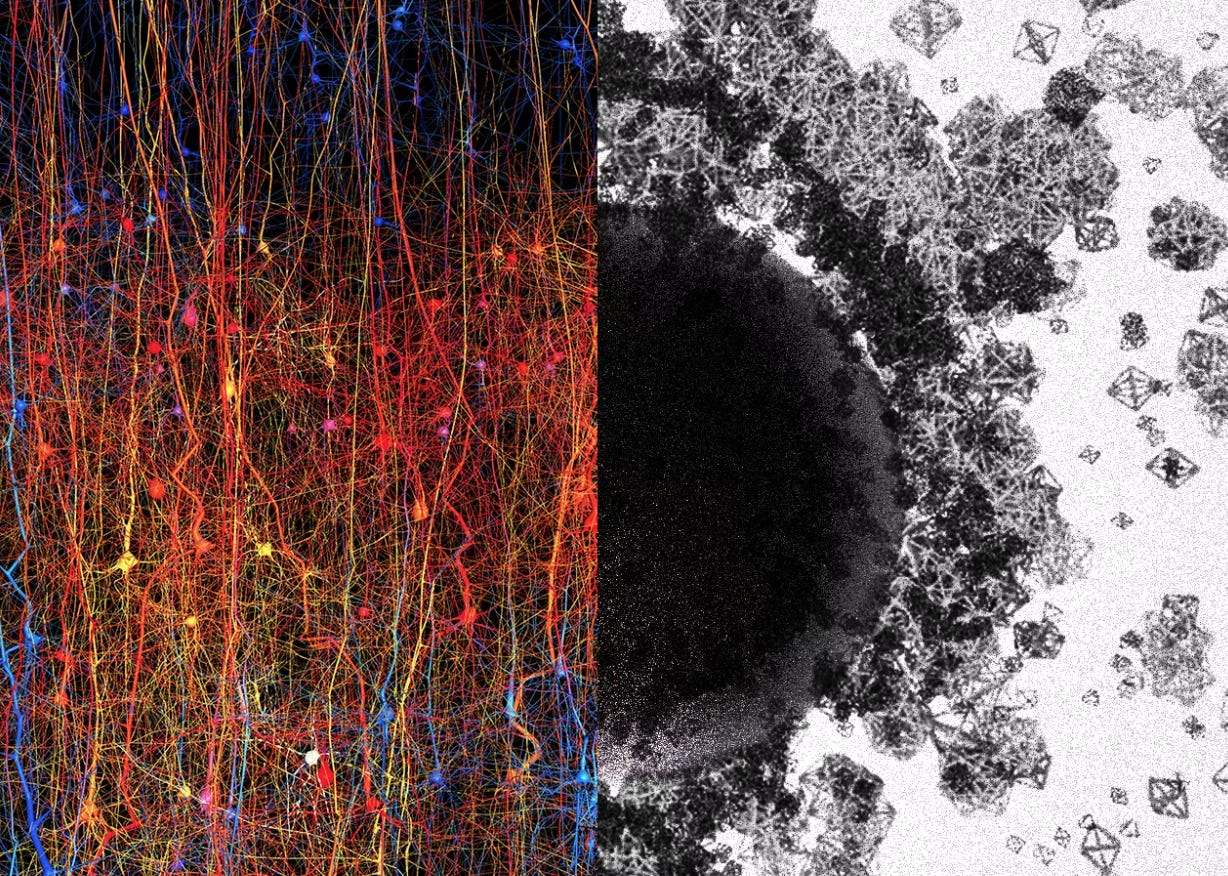
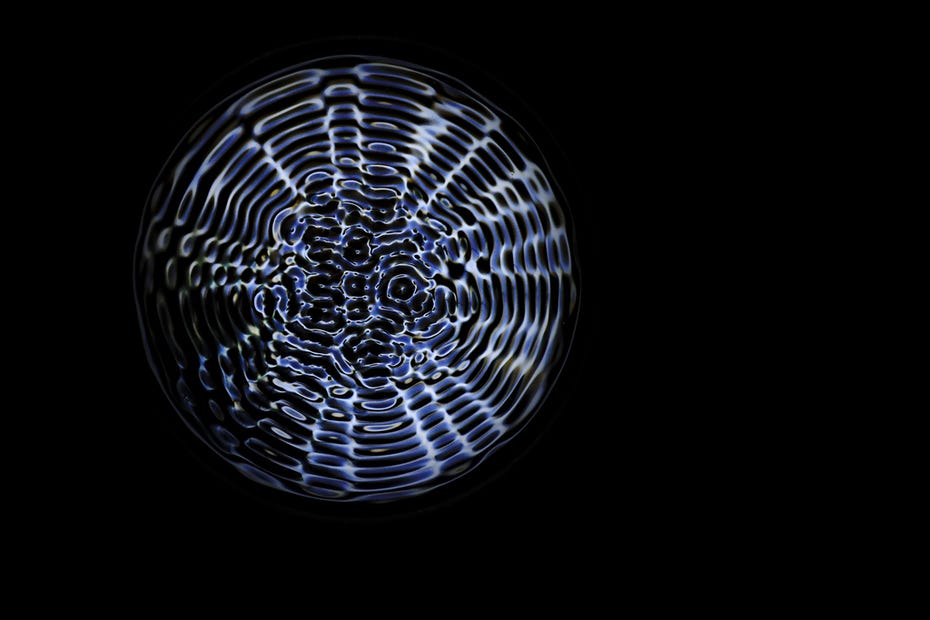
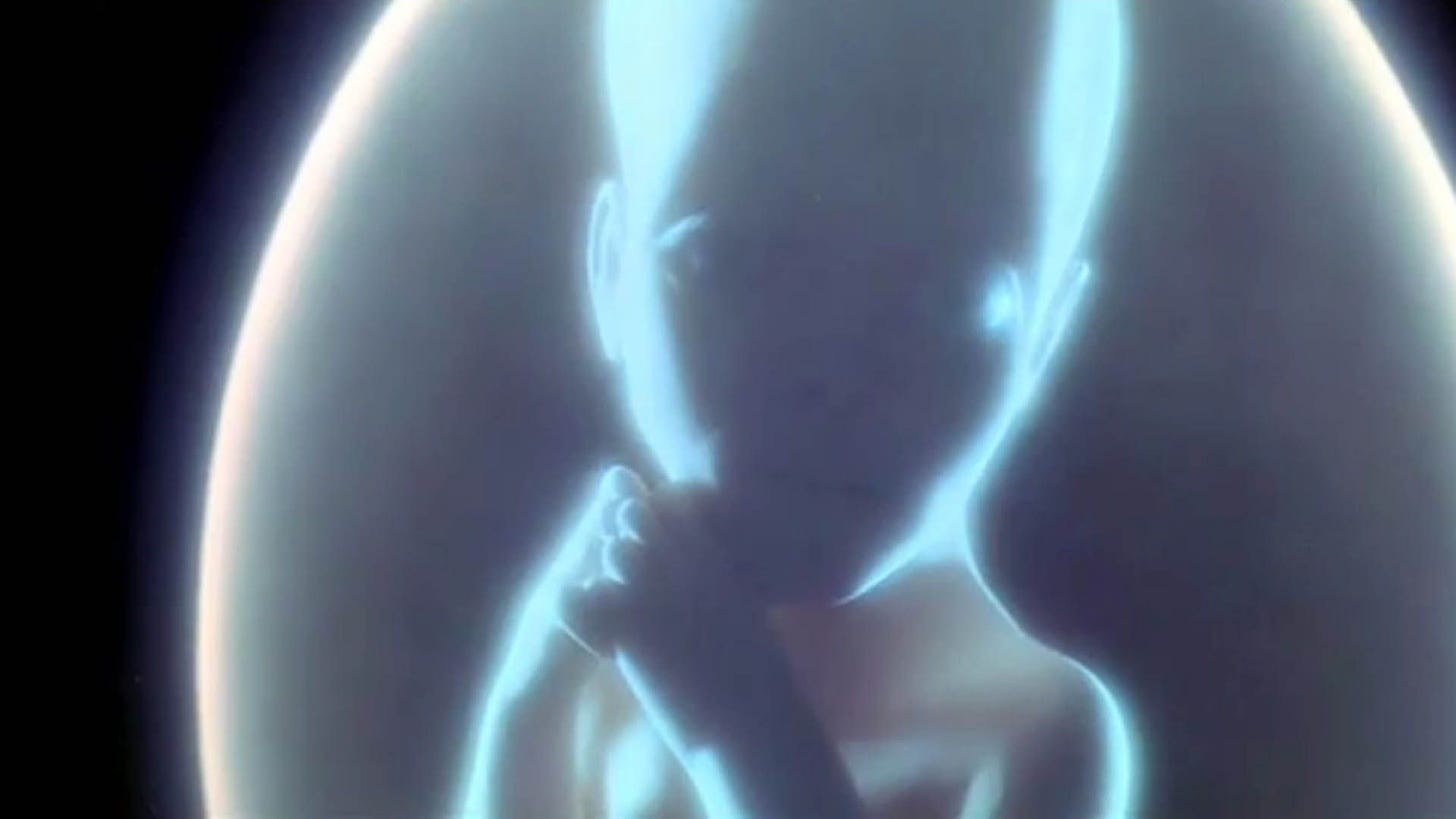
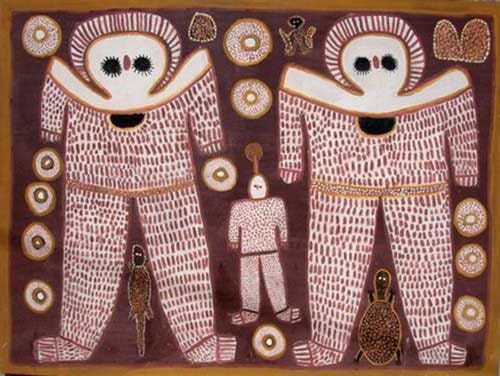










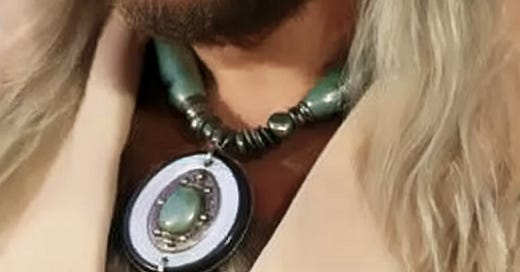

We live three lives - one in our dreams at night, our waking life and our 'afterlife' which is the life of the world to come.
Each of these lives has different characteristics.
Our dream life seems 'real' to us while we are dreaming but is less limited than our 'waking' life.
Our 'waking' life seems 'real' to us but is usually much more constrained than our dreams by time/space and the laws of physics.
The 'afterlife' will be totally unconstrained by those laws.
Of these three lives, our waking life is in many ways the most significant.
Although it is temporary and extremely limited, it has lasting consequences which determine the quality of both, our dreams at night and our afterlife.
Our thoughts determine our lives.
Thought is real - 'physical' is the illusion.
In our dreams, everything seems 'physical' even when they change rapidly or transform in unusual ways, until we 'wake up' and realize 'it was just a dream'.
In our 'waking life', the 'physical' is particularly convincing but in reality has no more solidity, substance or permanence than in our dreams.
Don't believe me? Ask a Quantum Physicist.
In the next world it will be just as 'physical' but no longer subject to time/space or the laws of physics except as the loosest of frameworks where we so desire.
Again: Our waking life is the most significant in that the choices we make in this life determine the quality of both, our dreams and, especially and in particular, our afterlife.
And our thoughts determine our lives in all three. The thoughts we entertain in this life determine the quality of each of our lives.
Here lies the root of the problem.
First of all, we have been conditioned to see things entirely backwards, to pay attention to what goes on in the 'outer' world and consider that to be the ultimate cause of everything that takes place in our lives, when in fact, our 'outer' life is a symbolic representation of what goes on in our thoughts.
In many ways, our 'outer' life is an illusion, a mirage that has no more reality in and of itself than do our dreams.
It's not until we 'repent', which literally means 'to turn around' and begin to pay attention to our thoughts, that we begin to see how our thoughts MAKE the worlds we then experience and take for reality.
So, that's the first problem, we take the mirage for 'reality' and disregard our thoughts as the real source of our subsequent reality.
The next problem is our lack of discernment of which thoughts we freely choose to accept and entertain.
The third problem is that we are not entirely free to choose which thoughts we will accept and entertain. We have been conditioned and, even moreso, intentionally brainwashed to accept and entertain only a very narrow spectrum of thoughts, the largest percentage of which do not have our best interests in mind for us.
The fourth problem is that, not only our conscious mind, but our sub-conscious and unconscious mind also contribute to the worlds that we create and they are often at odds with each other and are filled with a 'Pandora's Box' of things we have inherited from our ancestors and acquired throughout our own personal history which do not necessarily have our best interests in mind.
In many ways we have been trained to become 'self-destruct Mynah Birds' who have been taught to go through our lives saying, "Here kitty kitty, here kitty kitty..."
These are just some of the more glaring problems with our thoughts which a genuine Spiritual Life is specifically designed to address and rectify.
This life, our 'waking life', is the place of the work. It is the place which determines the quality of our dreams, the substance of our present life and our ultimate fate outside of time/space and the laws of physics in the next world.
To mistake the 'outer' world for any sort of ultimate reality, to take it for the 'be all and end all' of life and to live accordingly is to miss the point of this life altogether and to risk our only opportunity to determine the quality of our next life which will be unlimited and last forever.
P.S. Not only our own thoughts, but we live in the midst of a 'noosphere' or, 'a sea of each other's thoughts' which all work together and contribute to the world we then experience.
And, of course, the biggest problem with our thoughts that we are faced with is the fact that we have become estranged from the 'Larger Consciousness' of God, which is everywhere present and fills all things, which would afford us an intimate means of knowing and doing all things in complete balance and harmony with All-That-Is.
This symbiotic relationship with God's Consciousness is our Birthright and the source and substance of our natural state that we have lost touch with and ought to be our primary concern!
"I" am a very democratic organisms, even "my" gut bacteria (biome) get a vote...
If "they" dont like what's been eaten "they" protest, go on strike (= a gut ache)...
Often times "our" mind is so crowded by thoughts "I" drink heavily - to shut "them" up...
And "I" am sure it's "them" who're buggerizing around in "my" dreams...